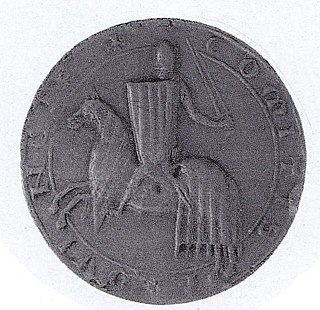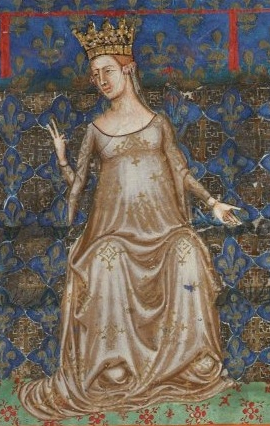See also
![]() Media related to 1267 in France at Wikimedia Commons
Media related to 1267 in France at Wikimedia Commons
| |||||
| Decades: | |||||
|---|---|---|---|---|---|
| See also: | Other events of 1267 History of France • Timeline • Years | ||||
Events from the year 1267 in France .
![]() Media related to 1267 in France at Wikimedia Commons
Media related to 1267 in France at Wikimedia Commons

Louis IX, commonly revered as Saint Louis, was King of France from 1226 until his death in 1270. He is widely recognized as the most distinguished of the Direct Capetians. Following the death of his father, Louis VIII, he was crowned in Reims at the age of 12. His mother, Blanche of Castile, effectively ruled the kingdom as regent until he came of age and continued to serve as his trusted adviser until her death. During his formative years, Blanche successfully confronted rebellious vassals and championed the Capetian cause in the Albigensian Crusade, which had been ongoing for the past two decades.
Year 1383 (MCCCLXXXIII) was a common year starting on Thursday of the Julian calendar.

Charles I, commonly called Charles of Anjou, was a member of the royal Capetian dynasty and the founder of the second House of Anjou. He was Count of Provence (1246–1285) and Forcalquier in the Holy Roman Empire, Count of Anjou and Maine (1246–1285) in France; he was also King of Sicily (1266–1285) and Prince of Achaea (1278–1285). In 1272, he was proclaimed King of Albania, and in 1277 he purchased a claim to the Kingdom of Jerusalem.

Year 1160 (MCLX) was a leap year starting on Friday of the Julian calendar.

Thomas II was the Lord of Piedmont from 1233 to his death, Count of Flanders jure uxoris from 1237 to 1244, and regent of the County of Savoy from 1253 to his death, while his nephew Boniface was fighting abroad. He was the son of Thomas I of Savoy and Margaret of Geneva.

Philip I was Count of Savoy from 1268 to 1285. Before this, he was Bishop of Valence (1241–1267) and Archbishop of Lyon (1245–1267).

Ludovico I or Louis I was Duke of Savoy from 1440 until his death in 1465.

Richard was an English prince who was King of the Romans from 1257 until his death in 1272. He was the second son of John, King of England, and Isabella, Countess of Angoulême. Richard was nominal Count of Poitou from 1225 to 1243, and he also held the title Earl of Cornwall from 1225. He was one of the wealthiest men in Europe and joined the Barons' Crusade, where he achieved success as a negotiator for the release of prisoners and assisted with the building of the citadel in Ascalon.

Blanche of Castile was Queen of France by marriage to Louis VIII. She acted as regent twice during the reign of her son, Louis IX: during his minority from 1226 until 1234, and during his absence from 1248 until 1252.

Edmund, Earl of Lancaster and Earl of Leicester, nicknamed Edmund Crouchback, was a member of the House of Plantagenet. He was the second surviving son of King Henry III of England and Eleanor of Provence, and the younger brother of King Edward I of England, to whom he was devoted and loyal.

Margaret of Provence was Queen of France by marriage to King Louis IX.

Hugh III was Duke of Burgundy between 1162 and 1192. As duke, Burgundy was invaded by King Philip II and Hugh was forced to sue for peace. Hugh then joined the Third Crusade, distinguishing himself at Arsuf and Acre. He died at Acre in 1192.

Raymond VII was Count of Toulouse, Duke of Narbonne and Marquis of Provence from 1222 until his death.

Ramon Berenguer IV was a member of the House of Barcelona who ruled as count of Provence and Forcalquier. He was the first count of Provence to live in the county in more than one hundred years. During the minority of a previous count, the regency was exercised by Ramon Berenguer IV de Barcelona, who is sometimes counted among the counts of Provence.

Beatrice of Savoy was Countess consort of Provence by her marriage to Ramon Berenguer IV, Count of Provence. She served as regent of her birth country Savoy during the absence of her brother in 1264.

Beatrice of Provence, was ruling Countess of Provence and Forcalquier from 1245 until her death, as well as Countess of Anjou and Maine, Queen of Sicily and Naples by marriage to Charles I of Naples.

John I de Montfort, Count of Montfort from 1241 to 1249, son of Amaury de Montfort, count of Montfort, and of Béatrice of Burgundy. In 1248 he joined Louis IX's crusader fleet. Once the fleet arrived at Limassol, it was scattered by fierce storms and was forced to wait there to regroup. John died of sickness, while awaiting the rest of Louis's forces in Cyprus.

Margaret of Geneva (1180?–1252), was a countess of Savoy by marriage to Thomas I of Savoy. She was the daughter of William I, Count of Geneva, and Beatrice de Faucigny (1160–1196).

Anne of Cyprus was a Duchess of Savoy by marriage to Louis, Duke of Savoy. She was the daughter of King Janus of Cyprus and Charlotte of Bourbon; and a member of the Poitiers-Lusignan crusader dynasty. She was highly influential in the Duchy of Savoy and acted as the political advisor and the de facto ruler on the wish of her spouse.

John, called the Old (l'Antique), was a French nobleman, the Count of Auxonne and Chalon-sur-Saône in his own right and regent in right of his son, Hugh III, Count of Burgundy. In contemporary documents, he was sometimes called "Count of Burgundy", as by King William of Germany in 1251.